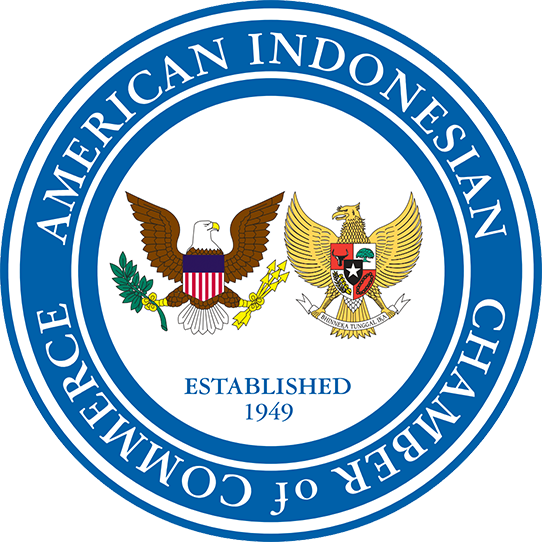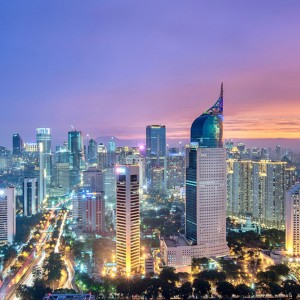American Indonesian Chamber of Commerce

- HOME
- ABOUT AICC
- The History of AICC
- Major Initiatives
- Trade, Tourism, and Investment Program (TTI)
- Opportunity Indonesia
- Introducing Indonesia: Scholastic Ambassador Program
- Preventing A Lost Generation
- Comprehensive Indonesian-English Dictionary
- Sustain Sumatra
- 10 Year’s After: A nationwide public awareness program
- Support to Mandiri Craft
- Congressional Staff Visit
- Business and Cultural Programs in Dallas, Texas
- US-Indonesia Women’s CEO Summit
- Topeng Sehat: AICC Initiative Against COVID-19
- 2021 Shipping NYC Surplus PPE To Indonesia
- Board of Directors
- Membership Benefits
- FAQ
- Membership Registration and Forms
- EVENTS
- LINKS
- TRADE LEADS
- LATEST NEWS/COMMENTARY
- DOING BUSINESSS
- COUNTRY DATA
- BLOG POSTS





AMERICAN INDONESIAN CHAMBER OF COMMERCE





| What is Indonesia's Development Model |
| Commentary by Wayne Forrest
The NY Times just reported a timely story (“Poor Nations Are Writing a New Handbook for Getting Rich”, April 2) on the loaded topic of “industrial policy”, a path laden with tariffs and import/export bans but also opportunity. Apparently, we are seeing more of it, and according to some economists, it may be necessary. Is it any wonder that at the same time experts are telling us world trade is shrinking; and it’s not just supply chain disruptions caused by the pandemic. For someone like me who grew up with notions of “comparative advantage” and “free trade” this is rather disorienting. It wasn’t news to read “for more than half a century, the handbook for how developing countries can grow rich hasn’t changed much: Move subsistence farmers into manufacturing jobs, and then sell what they produce to the rest of the world.” Indonesia has successfully followed that recipe but has not yet achieved a high level of industrialization like South Korea, Taiwan, Hong Kong, Singapore, and China, and, according to one economist quoted in the article, time may be running out. In this new era, “the industrialization model — which practically every country that has become rich has relied on — is no longer capable of generating rapid and sustained economic growth. You cannot generate enough jobs for the vast majority of workers who are not very educated,” said Dani Rodrik, a leading development economist at Harvard. For even if Indonesia can ramp up industrialization through efforts such as nationalizing its extractive industry and legislating local production and content, advances in manufacturing technology will not employ enough of its workforce. Take the textile industry. The article mentions a garment factory in Bangladesh that recently incorporated robotics and moved 3,000 workers off their production line. “The displaced workers cannot all become coders,” said their CEO. So, if export-led growth is not the way what is the new paradigm? Service sector? Countries with English as a first or second language (India, Philippines) have built a robust service sector with call centers and business processing for MNC’s, helping them achieve 6% or higher growth rates. Indonesia’s would have difficulty following this model but more investment in education (bringing mandatory schooling to 12 years from 9) could certainly help. Indonesia’s path seems to be to try a little of everything. Its policy, begun in the second half of the Yudhoyono administration (2010-2014), is to ride consumption, legislate value-added production in metals via export/import bans, incentivize foreign investment, and attempt to become the “plus one” in the China +1 strategy of MNCs reacting to Trump-era tariffs. President Jokowi added a robust program of infrastructure construction to the mix. This achieved steady 5% growth, but 7% is needed to absorb new entrants into the labor force. The middle class is growing but over half the working population remains in non-formal, low skilled, low wage work. Getting more of this group into manufacturing for both internal and external supply chains will be a major challenge if economists such as Harvard’s Rodrik are right. I would call Indonesia’s approach “calibrated self-sufficiency”. What’s this? Selective use of government policy-by-fiat to boost local production. But isn’t this the import substitution model that Indonesia, Russia, and India tried and failed at in the 1970’s and 80’s? Yes, and no. Governments now may be smarter, including Indonesia’s, which is not swearing off its interest in foreign trade and investment but is placing bets on areas of the economy it believes will help with industrial job creation such as metals processing and electric vehicles. The trouble is lots of other countries are doing this as well. Indonesia’s ace-in-the hole is its huge local market which is an incentive for investment on its own and can absorb production if exports aren’t as competitive as predicted. Its rate of consumption appears to help. US Treasury Secretary Janet Yellen would love Indonesia, a nation of consumers. Unlike China Indonesians are spenders more than savers; over 50% are under thirty. Consumption pulls along the economy when exports have lagged. Economists estimate that as much as 70% of GDP growth is due to consumption. Yellen is due in China soon where she will point out that China’s overproduction of just about everything, accounting for a third of the world’s manufacturing, and lack of consumption, is hurting the US and almost every other economy, sucking up jobs. This is an old tune, sung since China ascended to the WTO in 2001. But it is true. She may suggest that China provide incentives for its citizens to spend more. (like Indonesians and Americans) But their work ethic and frugality are ingrained, especially since families must save to take care of their elders as government social security schemes are underdeveloped. Indonesians, on the other hand, can’t afford to save, and even when they do, the amounts are not large enough to support the investments needed for 7% growth. It doesn’t help that few of them pay taxes. Here is where Indonesia could “miscalculate” in trying to become more self-sufficient. If it doesn’t rely on the export-led growth model, even though it’s followed, Indonesia is not yet self-sufficient in capital formation; they rely on inflows from foreign trade and investment especially to fund industrial expansion. Indonesia’s industrial policy might work in the short term in a few sectors such as nickel processing but within it are the seeds of its undoing: you can’t keep asking for foreign investment if what results is hiving yourself off from foreign goods and services. Enlarging the tax base would help as only about 15% of eligible tax payments are collected by the government. Billions more are regularly siphoned out of government loan programs and procurement via corruption. Major reform of a legal system that too often can be “bought” by powerful oligarchs, especially in cases involving foreign corporations, would help. President Prabowo, in an age that lacks a clear development model, would be well to aspire to become the anti-corruption, tax collecting, education, judicial reform President. And by the way, be careful with industrial policy. (The views represented are the writer’s own and are not necessarily shared by members of the American Indonesian Chamber of Commerce) |